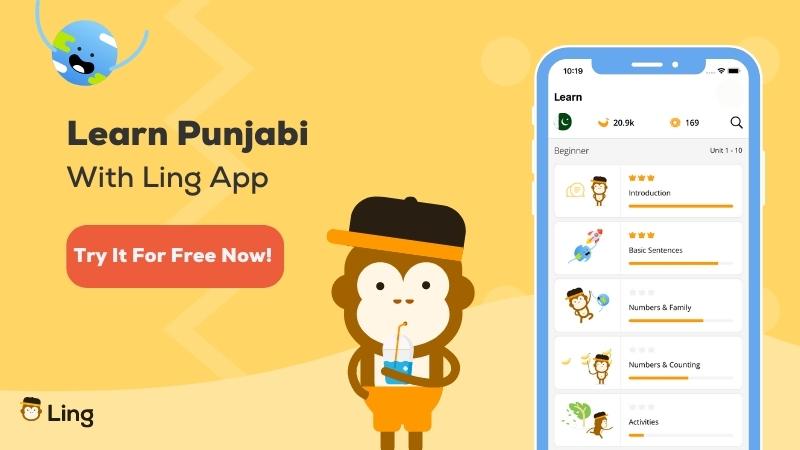Healthy living is the cornerstone of a happy and fulfilling life, but to achieve it, effective communication about our health is vital. For those who speak Punjabi, mastering the language’s health vocabulary is a powerful tool to discuss medical conditions, symptoms, and treatments with healthcare professionals, and to comprehend health-related information and instructions. In essence, it’s like having a secret weapon in the battle for better health.
The Punjabi language acts as a bridge, enabling seamless communication between patients and healthcare providers, leading to better diagnoses, treatments, and, ultimately, improved health outcomes. With a solid understanding of health vocabulary in Punjabi, individuals can take control of their health, make informed decisions, and potentially save lives.
Herbal medicines have a rich history and cultural significance in Punjab, making them an integral part of the region’s healthcare system. For centuries, the use of natural plant extracts for medicinal purposes has been practiced in Punjab. These remedies contain active ingredients that have therapeutic properties and are free from synthetic chemicals or artificial additives.
The purpose of this article is to explore the history and importance of herbal medicines in Punjab, from their traditional and cultural significance to their modern-day applications.

Herbal Medicines In Punjab
The use of herbal medicines in Punjab dates back to ancient times. The region’s diverse range of plant species and traditional knowledge of medicinal plants have led to the development of a unique healthcare system that relies heavily on herbal remedies. The knowledge of herbal medicines has been passed down from generation to generation and is deeply embedded in Punjab’s cultural heritage.
Herbal medicines are not only popular in Punjab but are also widely accepted by people all over the world. Many modern-day medicines are derived from herbal sources, and researchers continue to explore the potential of natural plant extracts in the treatment of diseases. In Punjab, herbal medicines have been used to treat ailments like diabetes, hypertension, and arthritis, and they are considered a cost-effective and safe alternative to modern medicines.
Traditional Punjabi healers, known as “hakims,” have been using herbal remedies for centuries to treat various ailments. These healers are highly respected and trusted members of their communities, and their knowledge and experience in treating diseases using natural remedies have been passed down from generation to generation. The ancient sages and practitioners, like Charak, Sushruta, and Vagbhata, played a vital role in promoting herbal medicines in Punjab. Their understanding and knowledge of the medicinal properties of plants have significantly contributed to the region’s healthcare system.
Common Herbal Medicines
Herbal medicine has been a significant part of traditional healthcare practices in Punjab for centuries, and its popularity has not waned over time. The region boasts a vast array of medicinal herbs, and the following are some of the most popular ones.
Tulsi
Tulsi, commonly known as Holy Basil, has a prominent place in traditional medicine and is used to treat various ailments like colds, coughs, and stress.
Neem
Neem, a tree native to India, has antibacterial, antifungal, and antiviral properties and is used for various issues like skin problems and fever.
Amla
Amla, or Indian Gooseberry, is a rich source of vitamin C and antioxidants that promote healthy skin, hair, and digestion.
Ginger
Ginger, a root with anti-inflammatory properties, is useful in treating nausea, vomiting, and indigestion.
Tumeric
Turmeric is a spice that has a wide range of medicinal benefits, including treating arthritis and digestive issues.
Garlic
Garlic is known for its antibacterial and antiviral properties, making it a natural remedy for respiratory infections and high blood pressure.
Fenugreek
Fenugreek is an herb that has anti-inflammatory effects and is used to treat menstrual cramps, digestive issues, and high cholesterol.
Ashwagandha
Ashwagandha is known for its adaptogenic properties and is an effective remedy for stress, insomnia, and fatigue.
Giloy
Finally, Giloy is a herb that boosts the immune system and is used to treat conditions like fever, respiratory infections, and arthritis.
Herbal medicine has a long-standing history of efficacy, and these popular herbal medicines in Punjab continue to be an essential aspect of healthcare practices in the region.
Punjabi Methods Of Making Herbal Medicines

Herbal medicines have been a trusted source of treatment for centuries, and in Punjab, they have deep roots in the local culture. The methods of preparing herbal medicines in this Pakistani province are diverse and unique, reflecting the traditions and practices of its people. The traditional methods involve boiling, steaming, and grinding the herbs, which are then used in a variety of applications, including decoctions and topical pastes.
These methods have been passed down through generations and are still widely used today. However, modern methods of preparing herbal medicines have also become popular due to their ease of use and longer shelf life. Tinctures and capsules are just some of the modern methods that have gained popularity in recent years.
While herbal medicines can be effective in treating ailments, it’s important to take safety precautions when preparing and consuming them. Consulting with healthcare professionals and sourcing herbs from reputable suppliers are crucial steps to ensure the safety and efficacy of herbal remedies.
Health Vocabulary In Punjabi
Now that we’ve covered herbal medicine in Punjabi, here is some helpful vocabulary for discussing medical conditions:
| English | Punjabi | Romanization |
| Acute | ਤੀਬਰ | tībara |
| Addiction | ਨਸ਼ਾ | naśā |
| Allergy | ਐਲਰਜੀ | ailarajī |
| Anxiety | ਚਿੰਤਾ | citā |
| Bacteria | ਬੈਕਟੀਰੀਆ | baikaṭīrī’ā |
| Chronic | ਪੁਰਾਣੀ | purāṇī |
| Depression | ਉਦਾਸੀ | udāsī |
| Diagnosis | ਨਿਦਾਨ | nidāna |
| Disability | ਅਪਾਹਜਤਾ | apāhajatā |
| Disease | ਰੋਗ | rōga |
| Exercise | ਕਸਰਤ | kasarata |
| Eye | ਅੱਖ | akha |
| Fitness | ਤੰਦਰੁਸਤੀ | tadarusatī |
| Health | ਸਿਹਤ | sihata |
| Hospital | ਹਸਪਤਾਲ | hasapatāla |
| Illness | ਬਿਮਾਰੀ | bimārī |
| Immunization | ਟੀਕਾਕਰਨ | ṭīkākarana |
| Infection | ਲਾਗ | lāga |
| Injury | ਸੱਟ | saṭa |
| Medication | ਦਵਾਈ | davā’ī |
| Nutrition | ਪੋਸ਼ਣ | pōśaṇa |
| Prescription | ਨੁਸਖ਼ਾ | nusaḵẖā |
| Recovery | ਰਿਕਵਰੀ | rikavarī |
| Rehabilitation | ਪੁਨਰਵਾਸ | punaravāsa |
| Stress | ਤਣਾਅ | taṇā’a |
| Surgery | ਸਰਜਰੀ | sarajarī |
| Symptom | ਲੱਛਣ | lachaṇa |
| Terminal | ਅਖੀਰੀ ਸਟੇਸ਼ਨ | akhīrī saṭēśana |
| Therapy | ਥੈਰੇਪੀ | thairēpī |
| Treatment | ਇਲਾਜ | ilāja |
| Virus | ਵਾਇਰਸ | vā’irasa |
| Weight | ਭਾਰ | bhāra |
Wrapping Up

Ling offers an excellent opportunity to learn Punjabi. With its interactive AI chatbot, flashcards, and quizzes, learning Punjabi becomes an easy and fun experience. Learning a new language can be challenging, but with Ling, it gets easier.
The program provides visual aids and meaning to the words, making it easier for children and adults to retain the information. It also enables you to share progress with friends and family, making it a collaborative and enjoyable experience.
With Ling, you can upgrade your Punjabi language skills, reading Punjabi books with ease. The results are visible as children and adults begin to understand and read things in Punjabi effortlessly. Learning Punjabi with Ling is easy, fun, and the perfect way to introduce someone to a new language.
If you speak English, then download this important app right away. You can also get more information from our official page.
So what are you waiting for? Download the app now from the Google Play Store or App Store and start learning Punjabi right away.
If you’re interested in this topic, you can also check out our articles on Punjabi currency and greetings.



































































